However, today we have a pleasant exception to the rule. The other day we talked with Alexander Vodovatov, the head of the Russian club of offshore racing "SeaVentus". Together with his team, the Dell Latitude Rugged 7212 ruggedized tablet passed one of the most difficult and prestigious yachting races of the Rolex Fastnet Race. So we propose to tune in the most positive way - today we will talk about yachting in Russia, the most difficult and extreme regattas in the world and, of course, about technology. About what tests fall to her lot, what software must be used, and why without a seriously protected PC it is simply impossible to win the regatta.
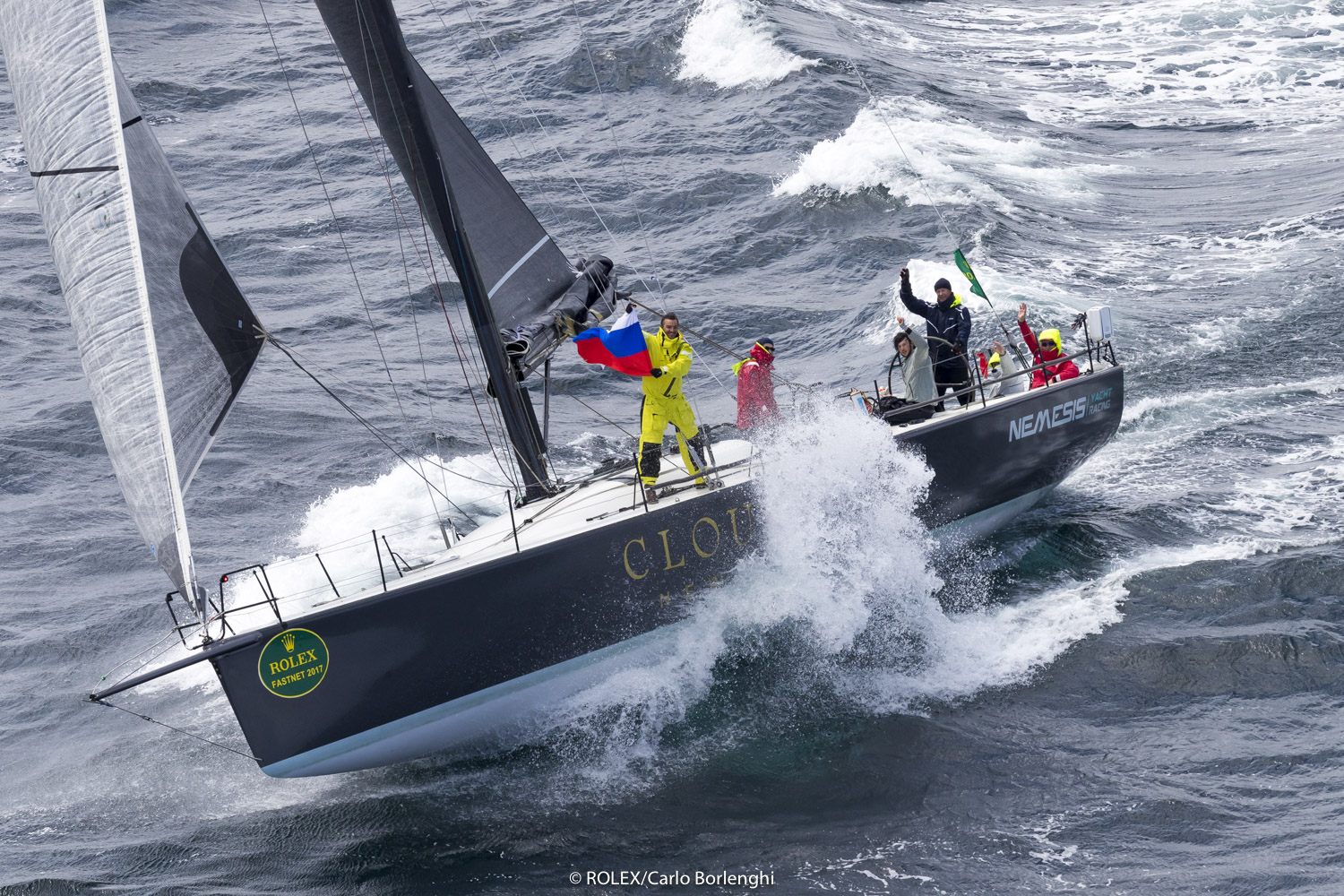
Not just racing, but challenging challenges
Sailing regattas are a rather complicated and multifaceted sports competition. We will not go into details, especially since today we will talk about one very specific direction - offshore regattas. Such races take place in the open sea or ocean - to the extent that the route can be transatlantic. The minimum duration of an offshore regatta is 3-4 days, the maximum - up to 2-3 weeks.
It is easy to guess that everything happens in a very unfriendly and often unpredictable environment for humans. A strong wind blows, salty spray flies, extreme heat can change dramatically to the same extreme cold. We add to all this constant shaking and the need to stay in a limited space of 10-30 meters along with a dozen people all the time, and we get an extremely severe test not only for physical, but also for moral stability. It does not matter at all how much time is on the clock and how exactly everything is raging around: if you need to change the sail, then there are no other options but to take it and just do it no matter what. From start to finish, the yacht runs around the clock. And in the same round-the-clock mode, the crew must provide this movement. He must maintain the boat and equipment not just in working condition, but in constant readiness to work "for wear".
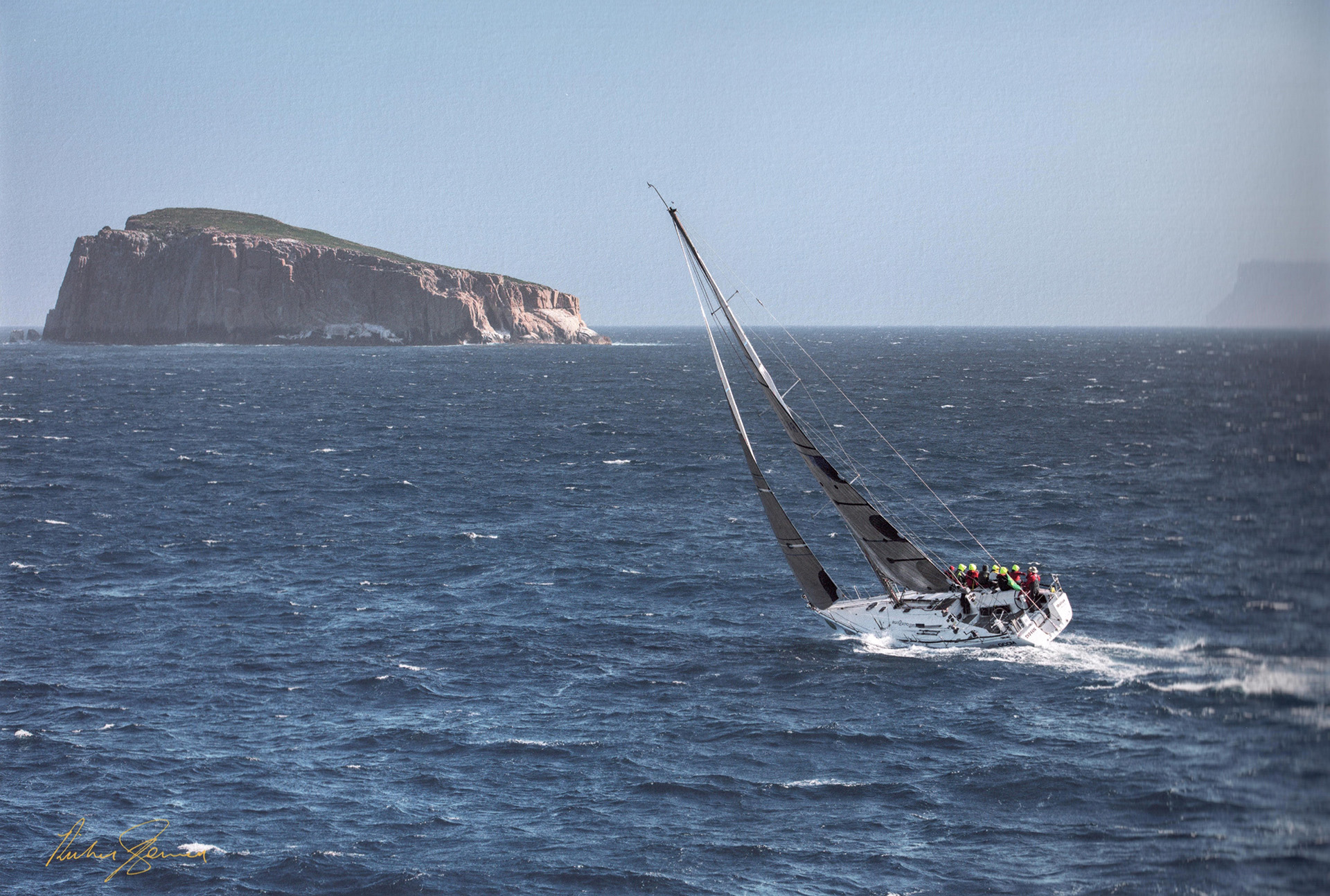
With the often cozy small “alcoholics” flashing on Instagram and other social networks, as they are called among experienced yachtsmen, when short routes from one port to another alternate with relaxing trips to coastal restaurants, serious offshore races have, quite frankly, quite a bit in common. It was extreme sports, teamwork, the opportunity to go through a difficult route and emerge victorious from a severe test, first of all over oneself, over one’s own weaknesses, to show the qualities of a real sailor, and they attracted Alexander Vodovatov to the world of offshore yachting. And for more than eight years he has been engaged exclusively in such projects. And people in such extreme conditions open up from a completely new perspective, reveal their real "I", perhaps their "Alter Ego" hidden in the depths of their subconscious - this also cannot but inspire.
For an approximate understanding of the scale, you can simply open Google Maps and evaluate the body of water, say, between Hong Kong and the Philippines. A total of about 700 nautical miles of open water is obtained, which is equivalent to 1300 land kilometers. This is one of the largest Rolex China Sea Race offshore regattas in the region. Alexander and his team also took part in it. For almost all four days of the journey, the most powerful rain continued without stopping, and the already turbulent South China Sea was treated with a steep oncoming wave every 10-15 seconds. At some moments it seemed that it was easier to drop everything and return to the shore. But the greater was the joy of overcoming all the trials.

The subtleties of organizing offshore regattas
Participation in an offshore regatta as part of a team is the first level. The next step is to recruit your own team and search for a suitable yacht. It is Alexander Vodovatov who is engaged in the second: partly this is a semi-professional, partly commercial format. Of course, no one gets into the team. There is a base of experienced yachtsmen, which is complemented by those who want to test themselves and are ready to pay the participant's fee. Prices range from 1000-1500 to 6000-7000 euros, but everything here does not depend on commercial benefits. Each regatta has its own special logistics. It affects the number of people, entry fees to the organizers of the race, meals, the cost of renting a yacht, remoteness from Russia and many, many other important points. Alexander says that the organizers of those same “alkoregates” make good money, and the history of offshore racing is more about the idea. The head of the SeaVentus club made some projects “to zero” or even at a loss and does not regret it at all. The experience, unforgettable impressions and the look of astonished foreigners who see how sailors from Russia completely unexpectedly defeat them or even simply perform at a level well above average, are much more expensive.
Despite the fact that Alexander began to organize teams for various (even multi-day) regattas a long time ago, he himself believes that the first truly offshore race, which he organized from start to finish, was the winning regatta in Australia in 2014 . Then he assembled a team of Russians and picked up a yacht to participate in the Rolex Sydney Hobart regatta. This is not only one of the oldest and most prestigious regattas (the first was held in 1945), but also one of the most difficult. The fact is that the 628-mile route passes through the so-called “roaring” forties and the infamous Bass Strait. During the same regatta in 1998, the wind speed in the strait reached 80 knots, and the combination of this with a shallow depth and powerful current became fatal: five yachts sank, six yachtsmen died. Of the 115 launched yachts, only 44 reached the finish line.

In 2014, Alexander, then still not the most experienced organizer, set himself a very ambitious and difficult goal, almost deciding to jump “above his head”. Before the start, I had to cope with a host of organizational tests. After all, you can’t just come to the organizers and say "I have a yacht and a team, I want to participate." There are a number of significant restrictions, which, of course, are not made in order to reduce the number of participants, but in order for everyone to be sure that only experienced people are competing, and not beginners who can turn the boat over at the very start. Usually, from a third to half of the team members should already have experience in offshore regattas, there should be a certain number of people with special certificates for survival in the sea, medicine, and so on. But everything worked out, and the Russians, whom the Sydney-Hobart race had not seen at that time for 5 years, started off safely.
We also reached the finish line safely, but here we need a little explanation. In offshore regattas, yachts of various types and sizes compete. And it would be strange to evaluate, say, a 10-meter ship with a 20-year history as well as a huge ultra-modern high-speed yacht made of the latest materials. Therefore, there is a system of measurements, according to the results of which the yachts are credited to various divisions. Roughly speaking, Bugatti "chasing" with Ferrari, and buses with buses, although all together pass the same route. And it so happened that in his division the Sydney-Hobart route, the boat of Alexander Vodovatov and his crew passed the very first. Even Russian yachtsmen themselves did not expect such a result: return tickets to their homeland were purchased on a date prior to the award ceremony. As a result, everyone flew away, and one person was left to receive an unexpected and very pleasant prize.
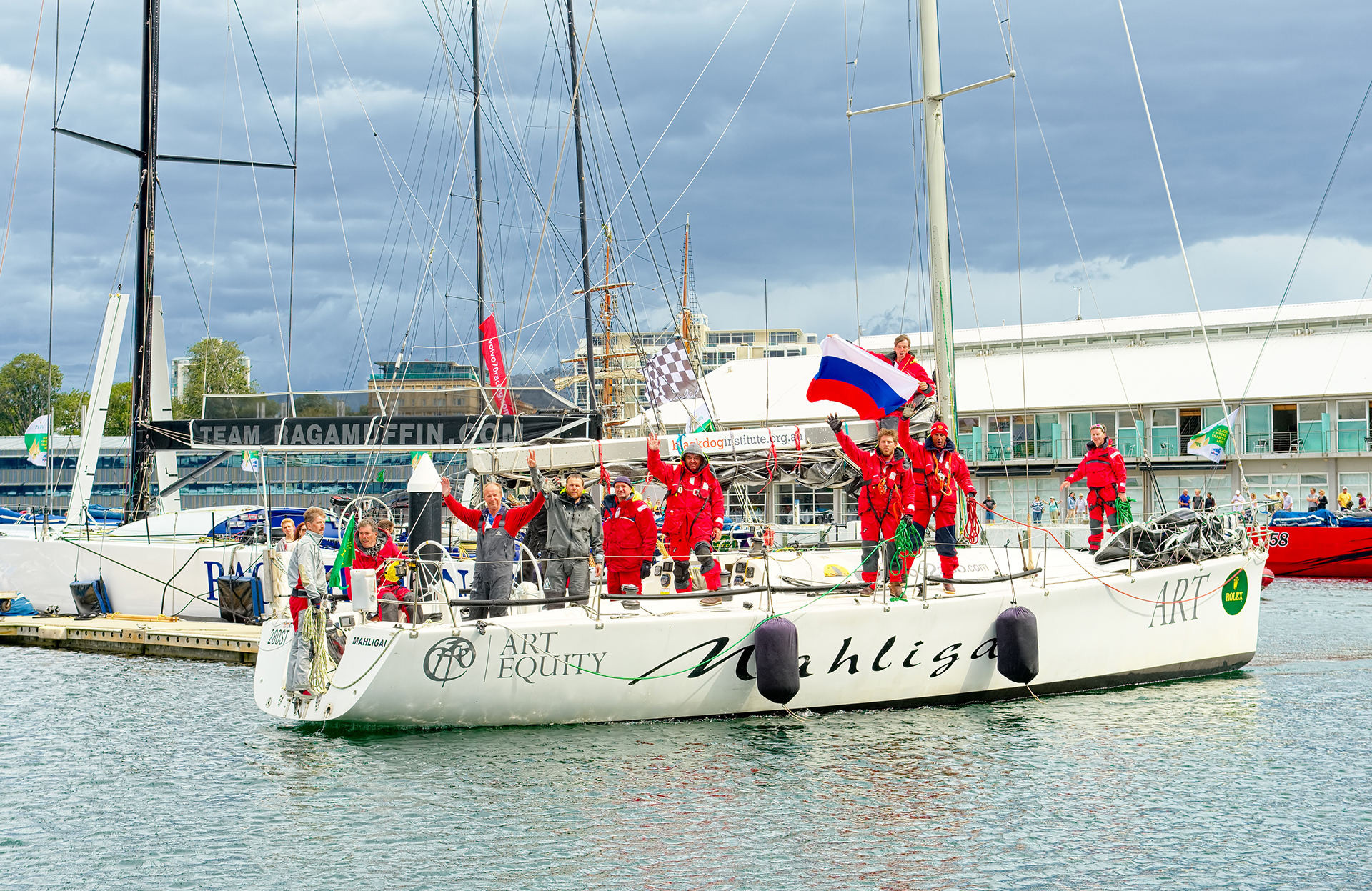
Computer - “eyes” of a yachtsman
Some yachtsmen participate in offshore regattas for the sake of interest and pleasure and do not bother with the purchase of special equipment. This is normal, but in order for all this to be just a race, and not following from point A to point B, the team needs “electronic eyes” - a computer with a special navigation program. Of course, there are separate regattas where the use of electronics is prohibited, but the competitions in which Alexander Vodovatov participates do not impose such restrictions. And since there is an opportunity, it would be foolish not to use it.
Initially, Alexander used a regular laptop, but after the first race it became clear that this was a bad idea. On the one hand, the problem is a constant and hard chatter - for hard drives, it can become fatal. But much worse than accidental strikes of technology. Given that shaking inside the yacht is even stronger than outside, this is not uncommon. But the most dangerous is the spray and evaporation of salt water. In a word, it all ended with the fact that after the first regatta Alexander’s laptop computer simply rusted from the inside.
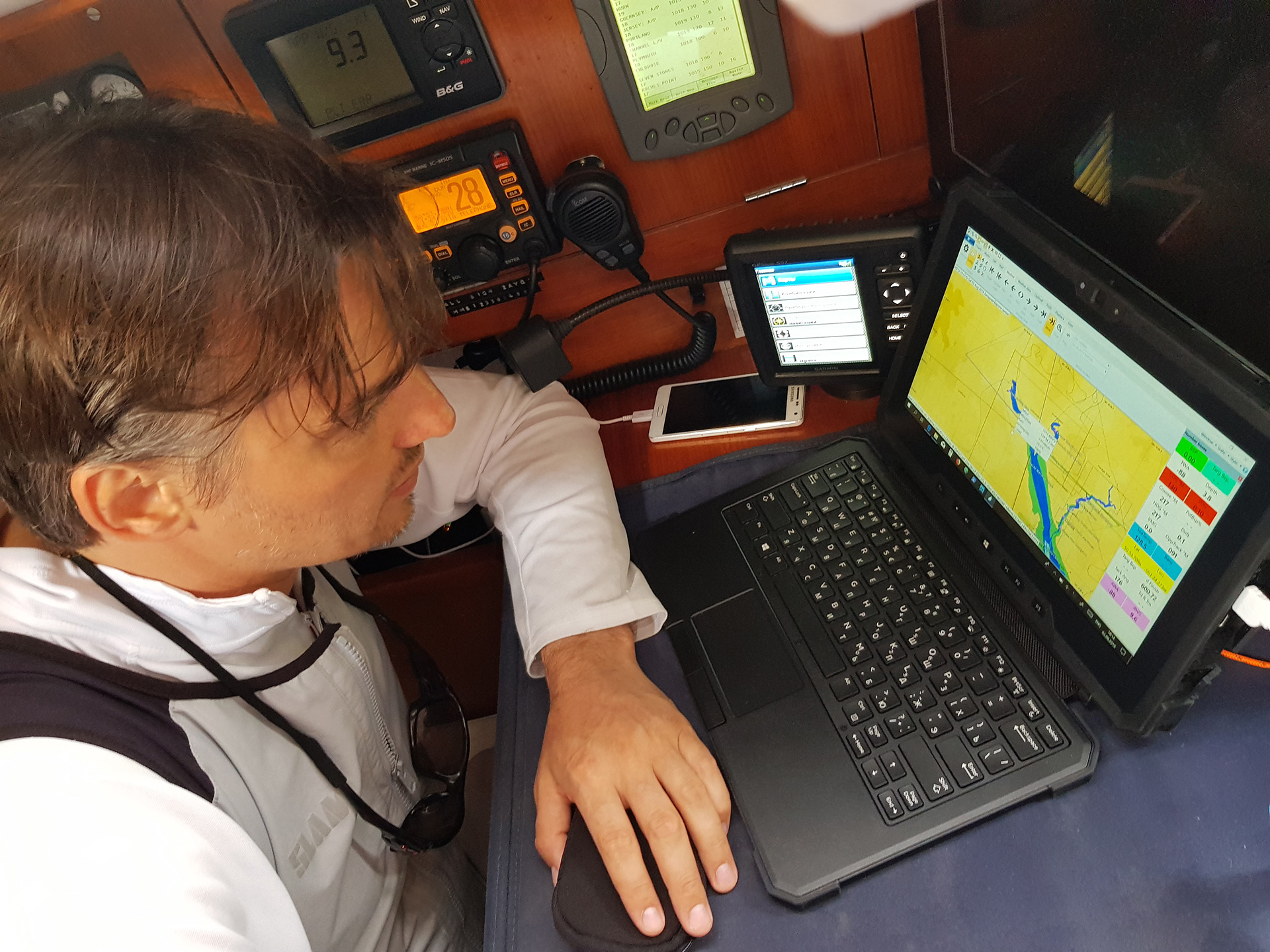
Observations showed that all serious yachtsmen participating in offshore regattas in terms of computer equipment were equipped no worse than intelligence agents from Hollywood films. A yacht must definitely have a computer protected by the highest standards of reliability. More often there are several at once - in case one suddenly crashes. Because without navigation it is impossible to see rivals when you are in kilometers from each other or night has fallen. Without navigation, it is impossible to accurately predict the weather, since the possibilities for making decisions are very limited. By the way, the “visibility” of rivals on GPS and AIS is not “cheating”, but a necessity enshrined in the regatta rules. During the day, the beacon can be turned off, but at night it must be active on each ship to prevent collisions.
Dell Latitude 7212 Rugged Alexander chose based on value for money. On the one hand, this device has a sufficient level of protection against the adverse conditions in which it is intended to be used. The MIL-STD-810 standard assumes extremely high levels of resistance to such troubles as falls and bumps, the tablet is not afraid of water, extremely high and low temperatures, and most importantly - salt fog. On the other hand, it is a full-fledged computer with Windows, made in the form factor of the tablet, which gives a high level of mobility.
The gadget is easy in itself - at any time you can take it out to show information on the screen to other team members and together make some important decision. At the same time, while inside the yacht, you can fasten the keyboard to it for the convenience of working with complex instructions and programs. Plus, of course, the touch screen is paired with a stylus - this is really convenient in conditions when there is water around. The issue of price was also not in last place: in comparison with competing solutions, the Latitude 7212 Rugged at the time of purchase was more affordable.

“I am very pleased with the power of the tablet, I just have enough with my head,” says Alexander. Judging by the standards of a regular user laptop, it may seem that the Intel Core i5-7300U, 8 GB of RAM and 256 GB SSDs are pretty modest. However, one must take into account the supercompact form factor, and design features, thanks to which all protection is implemented, and a special approach to the cooling system. All together adds up to a fairly serious price - in the "naked" form without accessories from 200 thousand rubles and above. But according to the usual "urban" criteria, it would be a mistake to evaluate such devices.
All computer ports are protected by powerful stubs. The diagonal of the display is 11.6 inches, and the resolution is 1920 × 1080 pixels. The viewing angles are wide, and the brightness level allows you to work with the display during the day under the sun on the deck of the yacht. Additional advantages are a backlit keyboard with adjustable backlight (you can change both intensity and color tone), a dark interface theme for working without ambient lighting and the ability to hot-swap the battery, since there are two compartments for them at once. For ease of communication, the tablet can be equipped with GPS and LTE modules.
Special navigation software, which is mandatory installed on a secure PC used on a yacht, is by no means free. In offshore regattas, Alexander and many other boaters use the Expedition Navigation and Sailing Software program, the basic version of which costs about $ 1200. Plus, you also need to buy cards for each region. It looks something like this: you can see not only all coastal cities and marinas, but also the depths and a huge amount of other useful data.

“Expedition” automatically takes some data from sensors installed on the yacht, some need to be entered independently. Let's say the features of the specific sails used on a yacht. After all, they take several to the race at once. For example, durable and small for strong winds, and light and large for a calmer one.
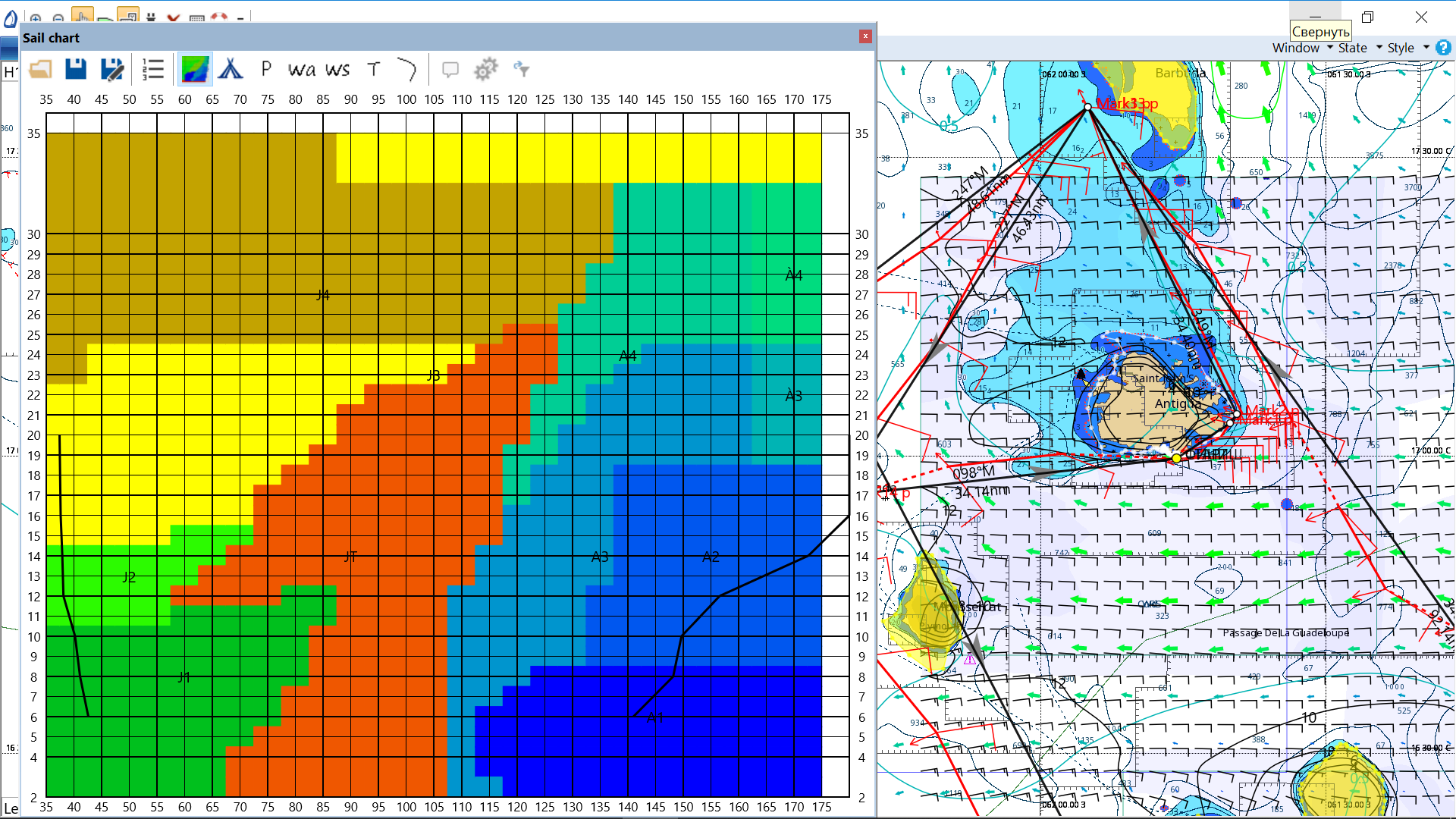
Yachtsmen using a satellite modem receive weather data and also enter them into the navigation program. The final task of Expedition is to build the fastest route to the finish line based on all the information entered, taking into account the depths and currents. Of course, during the race, many of the source data is constantly changing, so the route needs to be constantly monitored and adjusted. It is interesting that the crew’s “experience” can be set as a separate variable, and this point will also be taken into account in the calculations.
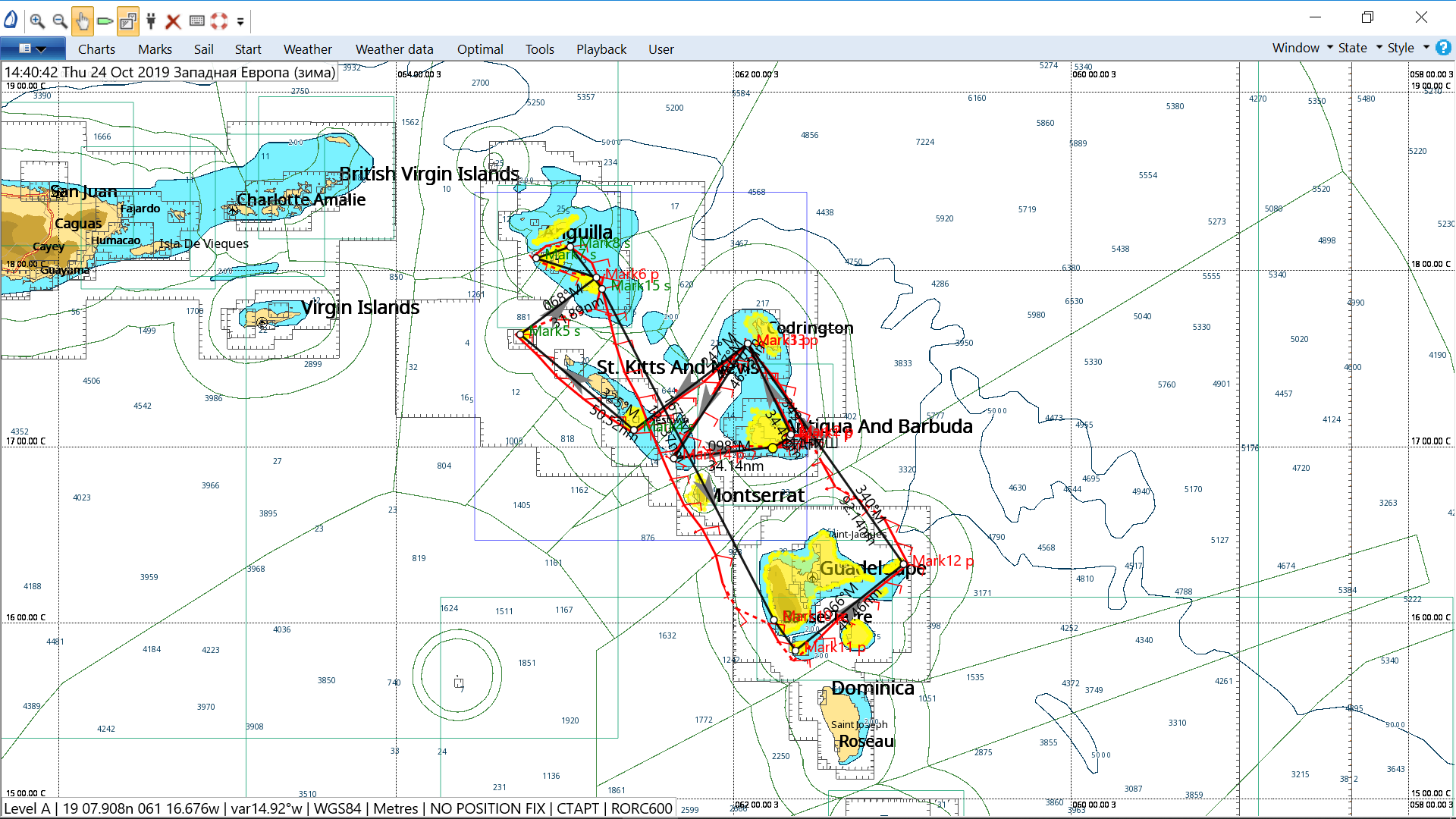
The screenshot below shows how the program calculates the speed of the yacht depending on the strength of the wind, its direction and the sail used.
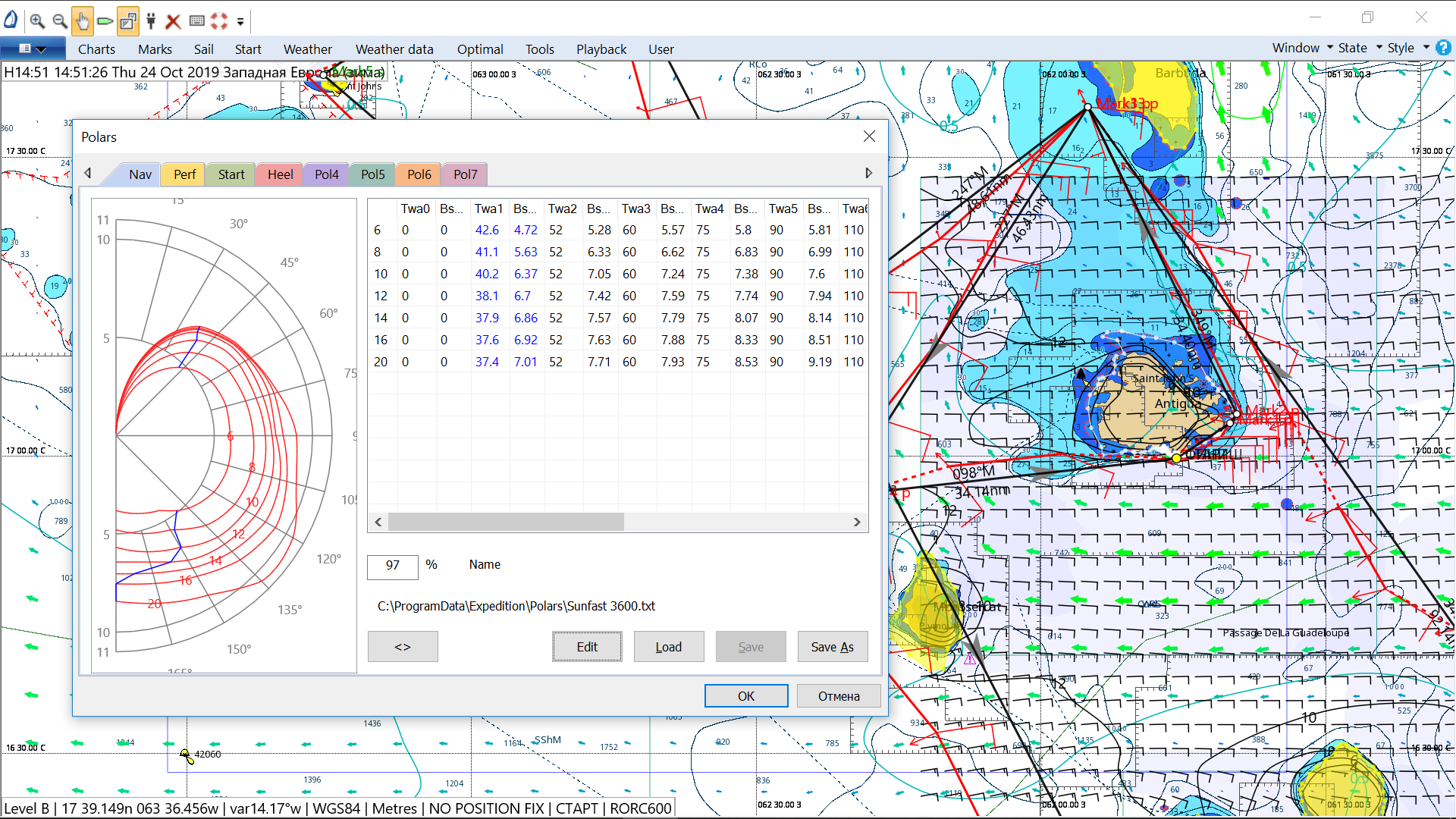
At the end of the regatta, you can explore the routes along which each yacht followed from start to finish. You can display all the participants at once, and only your division. During the race, this information is also available, but with some delay. Also, red rectangles can be indicated on the map - these are zones that you cannot enter. Sometimes they are asked by the organizers themselves to adjust the path, sometimes certain sections are closed by the authorities of the countries. Underwater cable laying or military exercises may go in the area.
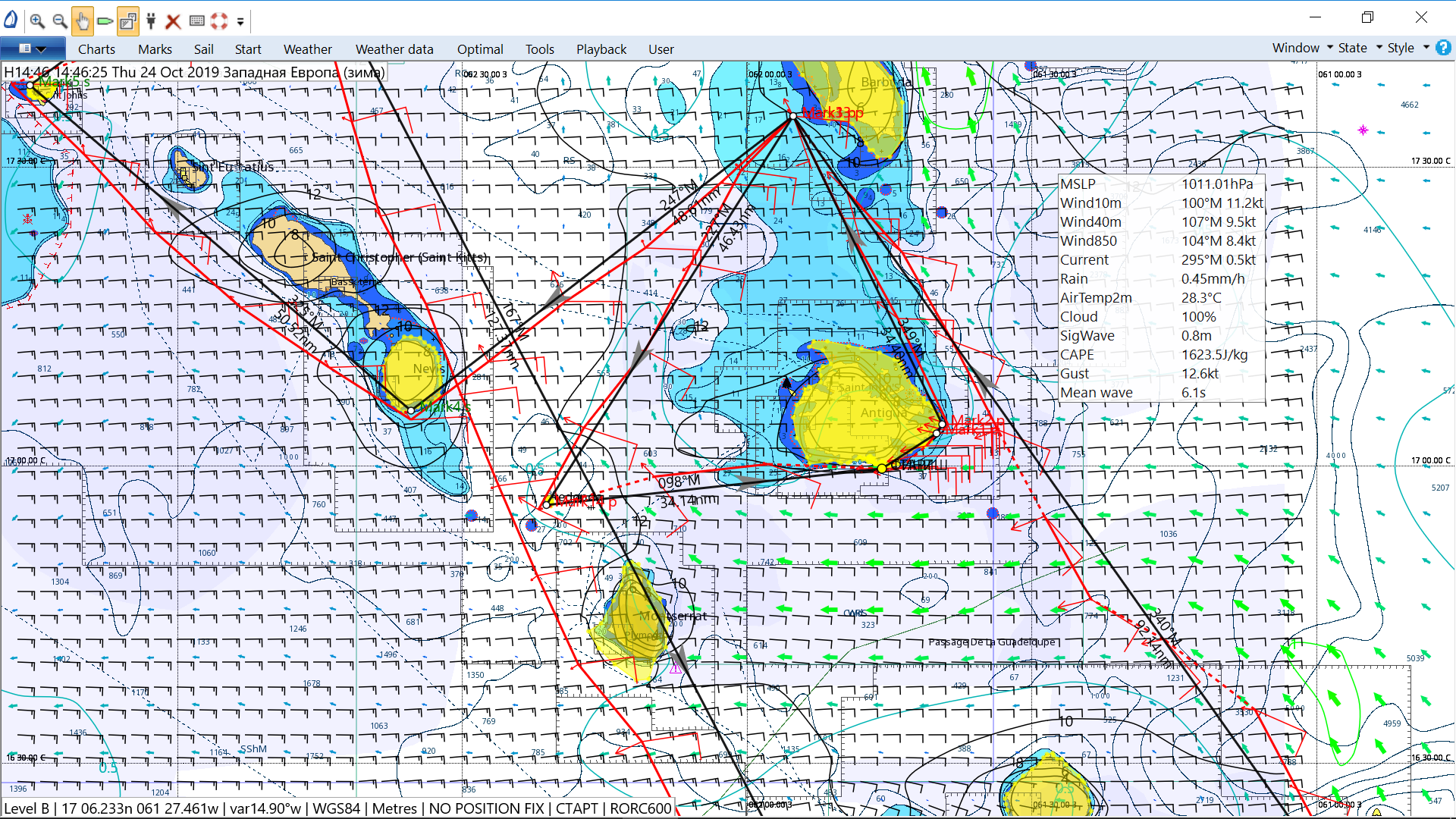
In general, everything here is very, very difficult - even Alexander himself says that he uses the program at an amateur level. For full-fledged work with Expedition, there is always a professional navigator on board the yacht who knows all the functions and features thoroughly. By the way, this is a very profitable profession, in which people from the IT sphere or just guys with a mathematical mindset often come. A few thousand dollars of royalties simply at the expense of a profitable route for the team and its yacht is by no means uncommon.
Most likely, many of you have already had a question: why do you need some tablets and laptops if the yacht probably has a built-in computer? This is true, it can be, although not always. And far from always it can be fully used, especially when a yacht is rented for the duration of the race. In addition, on computers installed on the boat, there are almost never such complex and expensive navigation programs as, for example, the same “Expedition”. Well, in any case, this is a much less convenient and functional option than your own portable protected PC. Absolutely all professional navigators choose exactly such devices.
Of course, Expedition is far from the only option for navigation software for yachtsmen. There are also more budget ones like “Navionix” that even work on Android, but there’s no point in comparing their functionality. It will turn out approximately like Photoshop and Paint, if translated into more understandable forms.
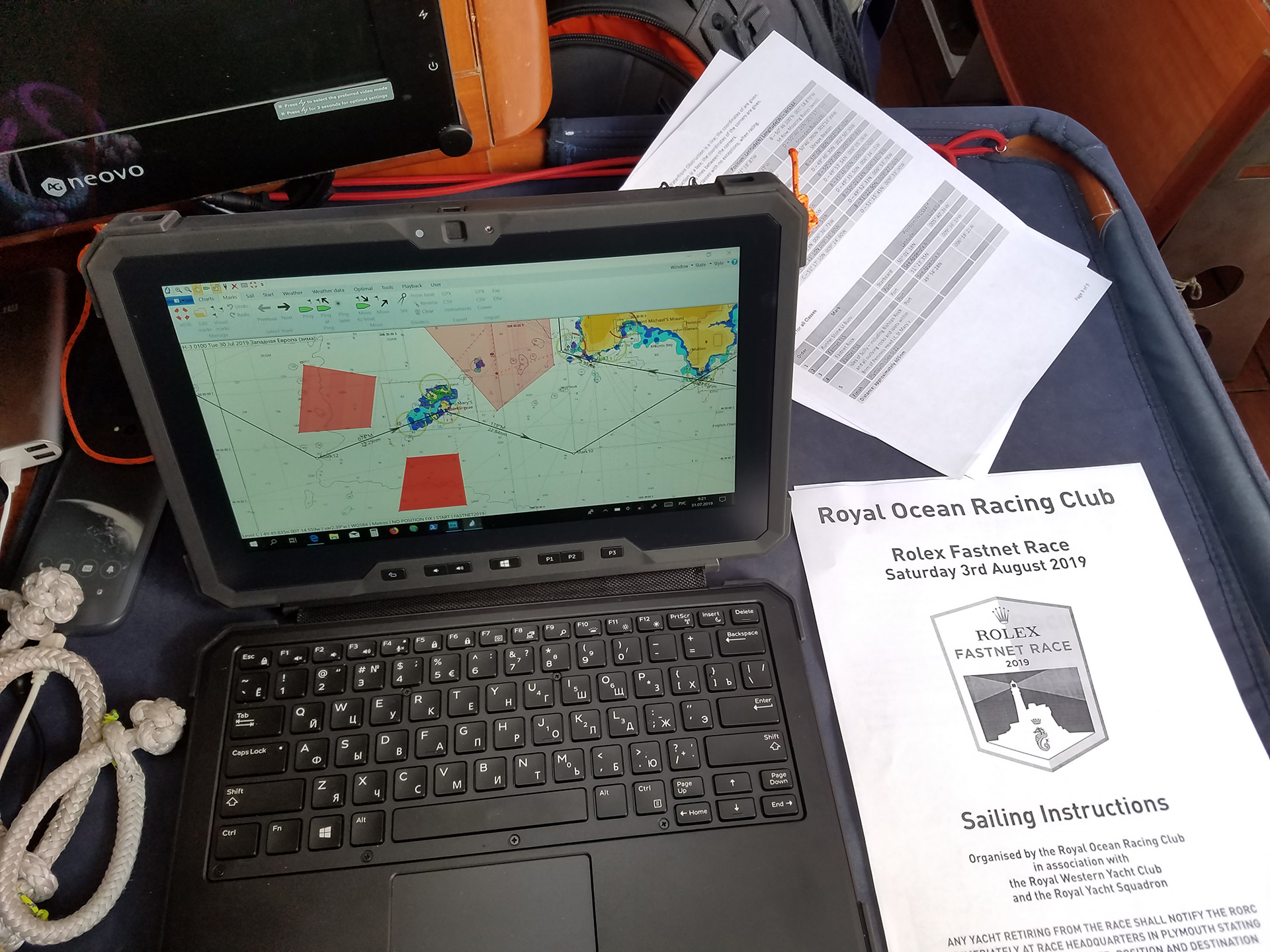
On the way to the yacht Formula 1
Behind Alexander Vodovatov is already more than a dozen successfully completed “top-end” offshore regattas. Each of them is a big and significant step before participating in The Ocean Race . This is the most difficult round-the-world race, in fact, Formula 1 in sailing. Domestic athletes took part in it only once. In 1989, specially for this, a Fazisi yacht was built at a shipyard in the Georgian city of Poti, which not only reached the finish line, but also showed an excellent result: it came to the finish line at number 6 out of 23. In the history of modern Russia, there was one attempt to participate, but, unfortunately, the team was unable to reach the long-awaited start in 2009 due to organizational difficulties. So there is a goal, and it is very ambitious.
For our part, we thank Alexander Vodovatov for an interesting story and wish you great success. In the comments we will try to answer all questions related to Dell protected tablets and the use of similar technology in sailing - do not hesitate to ask them. And, of course, thanks for reading to the end!